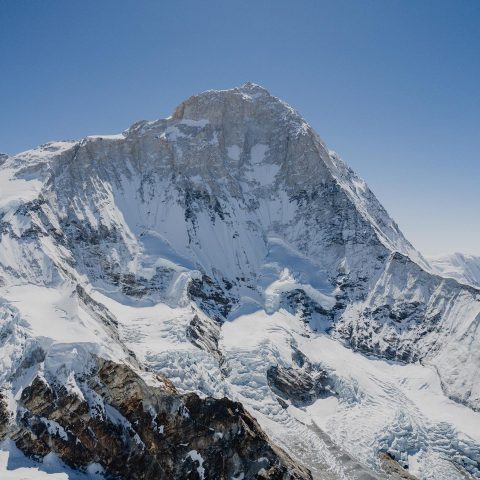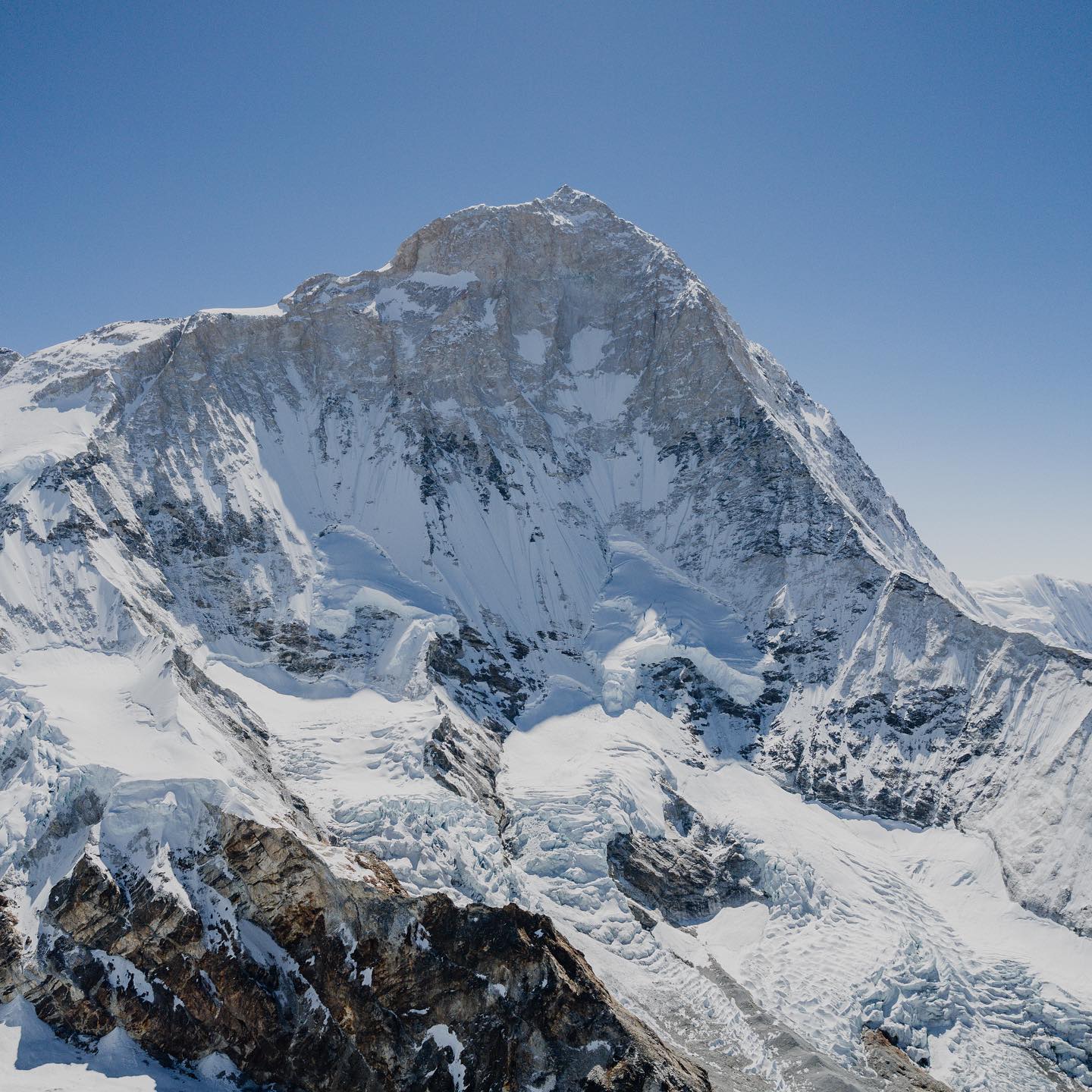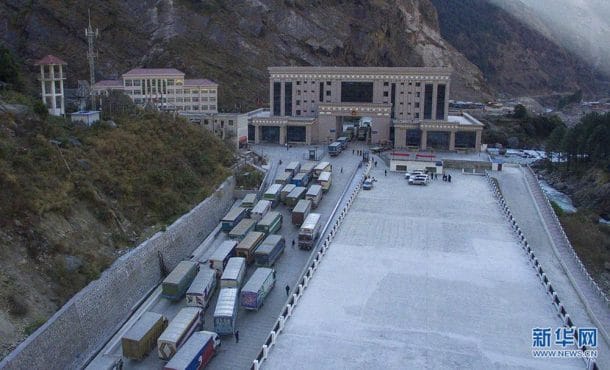A 52-year-old Indian client of Pioneer Adventure died after leaving Camp 4 on Kangchenjunga. His outfitter, tells the press that his Sherpas told Narayan Iyer to turn back, but he refused. Also, Helicopters are consuming the Khumbu.
With most Everest climbers resting at EBC or down-valley waiting for the weather window, the ‘other’ 8000ers are still busy. There are remaining attempts on Kangchenguga, Makalu, and Dhaulagiri.
In my Podcast yesterday with Michael Fagen of Everest Weather, Chris Tomer of Tomer Weather Solutions, and Marc DeKeyser of weather4expeditions.com, they are seeing something very different this year – a missing Jet Stream! All three experts agree that we are in for a period of calm weather, albeit with higher than usual summit temperatures. However, note that it will still be -20C/-4F on top! They also talked about the potential typhoon in the Bay of Bengal that may have landfall around May 15, but the path is very uncertain due to an immense area of high-pressure in the area.
There are still teams remaining to make an attempt on Kangchenguga, including Mimnga G of Imagine Nepal. Already on their push is the Canadian-led team, KanCan2022, now at Camp 2. Italian alpinist Marco Confortola, summited getting his 12th 8000-meter peak.
And on Dhaulagiri, Carlos Sori, 83, Sito Carcavilla, and the six Sherpas are now at Camp 1 hoping to summit on Monday, May 9, 2022. His home team posted:
Carlos Soria, Sito Carcavilla and Mikel Sherpa, along with the rest of the Sherpa team, are already in Camp 1. Conditions, despite the 15 cm that have fallen non-stop during the night, are good at the moment. If all goes well tomorrow they will continue to Camp II.
Also ready for their push is the team from Kobler & Partner, “Spring season in Nepal is in full swing. Our Dhaulagiri team also recovered in BC and now starting a summit trial. We keep our fingers crossed.”

Finally, climbers are positioning their attempts on Makalu. Adrian Ballinger, with his Alpenglow team, is ready, “Just another post about scale. Camp 2, 21,700 feet. I think it may be time to head back here tomorrow! This time on a summit push and a rope fixing mission and an 8000 meter peak ski adventure.” He gave this full update as well:
Our four Makalu teams have been running all over the mountain and acclimatizing as they prepare for their summit bids in their different styles.
Today @estebantopomena and @namgye went on a rope fixing mission with 3 7-Summits Sherpa. They made it just 20m shy of the summit, fixing until they ran out of rope. They gave a super proud effort, and we’re stoked to have been able to help push the fixed lines higher up the mountain.
Yesterday @karl.egloff and @nicolasmiranda360 put in an incredible effort for an in-a-day ascent, reaching 8,020m, (26,300’). They climbed +/- 7,500’ without oxygen over a 19hr period. Super proud effort! They’re back in ABC and resting for another go.
@carla.perez.ec just finished an acclimatization rotation, spending the night at C3 (23,500’) before returning to C1 and spending another night up high tonight.
And last but not least, @adrianballinger and @c.e.ochs have been resting and going on day hikes to 6,000m (20,000’). Adrian’s acclimatized and ready for a summit push, and Christina is feeling strong and stoked to get back up the mountain with Topo!
With a weather window approaching, our teams are talking over strategy and finalizing plans. Psych is high! Good luck teams!
Helicopters – Helping or Hurting?
With their acclimatization rotations complete, many climbers will take a helicopter and fly to Namache, Lukla, or even Kathmandu for a ‘vacation’ from the trials of climbing Everest. As I’ve mentioned many times over the years, the late legend Anatoli Boukreev spoke of ‘touching grass’ before the summit attempt. However, in contrast to today, Antoli meant taking a short walk to treeline and staying in a teahouse, not flying to a five-star hotel in Kathmandu.
Over the past few years, climber after climber has noted that Everest base Camp has turned into an airport with nonstop helicopter takeoffs and landings. Some are medical emergencies, but most are for ‘climbers with means’ to bypass the inconvenience of spending time at base camp. Some guides will use these flights to ferry in fresh meat or delicacies from Kathmandu to nourish their clients.
The locals who live year-round in villages like Pangchboche, Periche, or Dingboche comment that the constant helicopter flights create unbearable noise pollution in an otherwise pristine environment. They note that it has become normal for the rich to hike to Kalapathar and then take a chopper from Gorakshep or Lobuche back to Kathmandu. They complain to local authorities, but to no avail.
One local Khumbu resident told me:
“Though it is clear that helicopter has played a big role in emergency rescue and good transportation in the Khumbu, we are all seeing the increase in noise pollution due to helicopter inside a sensitive area like Everest National Park . And we keep listening. So I see the need to think about managing activities including helicopter in time to avoid both tourism and the enenvironemnt in the Khumbu.”
The root of these issues comes back to money. Several high-profile guide companies own helicopters and offer them as part of VIP packages or even contrived rescues. As I reported in 2018, there was a huge scandal involving trekking guides who arranged fake medical rescues by spiking their customer’s drinks to make them nauseated. The guides told them they had altitude sickness and needed an emergency evacuation.
That year, AFP reported that the tourism ministry probe found more than 1,300 helicopter rescues in the first five months of 2018, costing insurers over $6.5 million. The investigation looked at 36 trekking companies, 10 helicopter companies, and six hospitals. Alarmingly, the investigation also uncovered evidence of guides putting baking soda — a laxative — in food to give tourists diarrhea and then pressuring them to be evacuated by helicopter.
The aviation publication, Vertical, said that Airbus’ helicopter sales to Nepal have been booming with sales of the AS350 series: the AS350 B3e, now known as the H125 delivering over 20 new machines during the past few years to the Nepalese Army, Shree Airlines, Simrik Air, Fishtail Air, Air Dynasty, Heli Everest, Mountain Helicopters, Altitude Air, and Manang Air.
Francois Bazin, head of Sales, Support, and Marketing for Airbus Helicopters India, is quoted as “This year we have signed a couple of contracts, and we expect we’ll have more than 30 H125s flying in the country by 2025. So it’s a growing market, mainly driven by the growing number of tourists.”
But back to ‘touching grass.’ I get it but never did it. I always felt the risks of catching a bug from trekkers, tourists, or other climbers in packed teahouses was not worth the risks. Also, in the days before helicopters, walking for several days back and forth felt like a waste of energy.
There is certainly a time and place for helicopter flights. For example, I was, and still am, extremely grateful to be flown out of the Western Cwm after the 2015 earthquake. And I know many people who have been evacuated with serious medical issues like HAPE or HACE and needed immediate medical care in Kathmandu.
This year, helicopters were used to ferry fix-ropes to Camp 2 to eliminate scores of dangerous trips through the Icefall for the Sherpas. The choppers also brought down hundreds of kilos of trash that never should have never been there in the first place, but that’s another story. These are a legitimate use of the flying machines and occur on other mountains like Denali, Aconcagua, and the Alps.
Oswald ‘Ossie’ Freire, who is currently guiding on Everest, posted this provocative article:
Heli-doping
Every season I ask myself the same question: to what extent is it ethical to climb Everest at the expense of others? What qualifies as “climbing” and what can be seen as doping or “performance enhancing”?
Is it ok to go from 3 preparatory rotations up the mountain to only one with comparatively little time at altitude, only because someone will carry extra oxygen tanks, allowing for high-flow climbing? Is enabling climbers without previous experience to climb ok, just because we can better manage the risks with technology and thereby skip adequate preparation?
Are we turning magnificent helicopter pilots into high-altitude chauffeurs- using and abusing helicopters to move around Everest, especially to the high fields? I have witnessed cases of Heli-doping where climbers opt to skip (fly) over something as emblematic as the Khumbu icefall. I have seen clients pushed to the limit of exhaustion with little thought since they can easily be rescued from C II by helicopter.
Up until what point is it ethical to use any resources available to STEP ON THE SUMMIT instead actually climbing the mountain…?
All this said, in these times of huge private dome tents at Base Camp with a queen-sized bed and mattress, heater and sit-down desk, plus unlimited electricity and Internet, what’s a helicopter flight for a little R&R? Times have changed, to be sure. But for the locals, these tourist luxuries are taking away the serenity they cherish.
Climb On
Alan
Memories are Everything
The Podcast on alanarnette.com
You can listen to #everest2022 podcasts on Spotify, Apple Podcast, Google Podcasts, Pocket Casts, RadioPublic, Anchor, and more. Just search for “alan arnette” on your favorite podcast platform.
Summit Coach
If you dream of climbing mountains but are not sure how to start or reach your next level, from a Colorado 14er to Rainier, Everest, or even K2, we can help. Summit Coach is a consulting service that helps aspiring climbers throughout the world achieve their goals through a personalized set of consulting services based on Alan Arnette’s 25 years of high altitude mountain experience, including summits of Everest, K2, and Manaslu, and 30 years as a business executive.






6 thoughts on “Everest 2022: 3rd Death of Season”
I have no interest in climbing Mount Everest. But if I did, I would want the whole experience. I really don’t get the point of people spending the barest minimum amount of time possible on Mount Everest, just to check it off their bucket list. Mountain climbing is supposed to be a hobby/activity one does for the love and enjoyment, not something distasteful that someone forces themselves to do.
Thank you Alan for keeping us updated and posted on what is happening high up especially on the 8000m peaks!! I have been following your comments and coverage for several years now during the climbing season and you’re the first I go to for the latest news .
Thanks William. I appreciate your comments.
Once again, thanks for such good reports
Thanks for this honest and open discussion, Alan.
Thanks for the report Alan. Horrified by the helicopter circus. One either climbs the whole mountain or not at all. Rich climbers flying about for the luxury of it all is nonsense. They then return home and brag about climbing Everest but they are kidding themselves as they actually didn’t. Helicopters are for the people that really need it. Not for this nonsense. Am appalled.
Comments are closed.